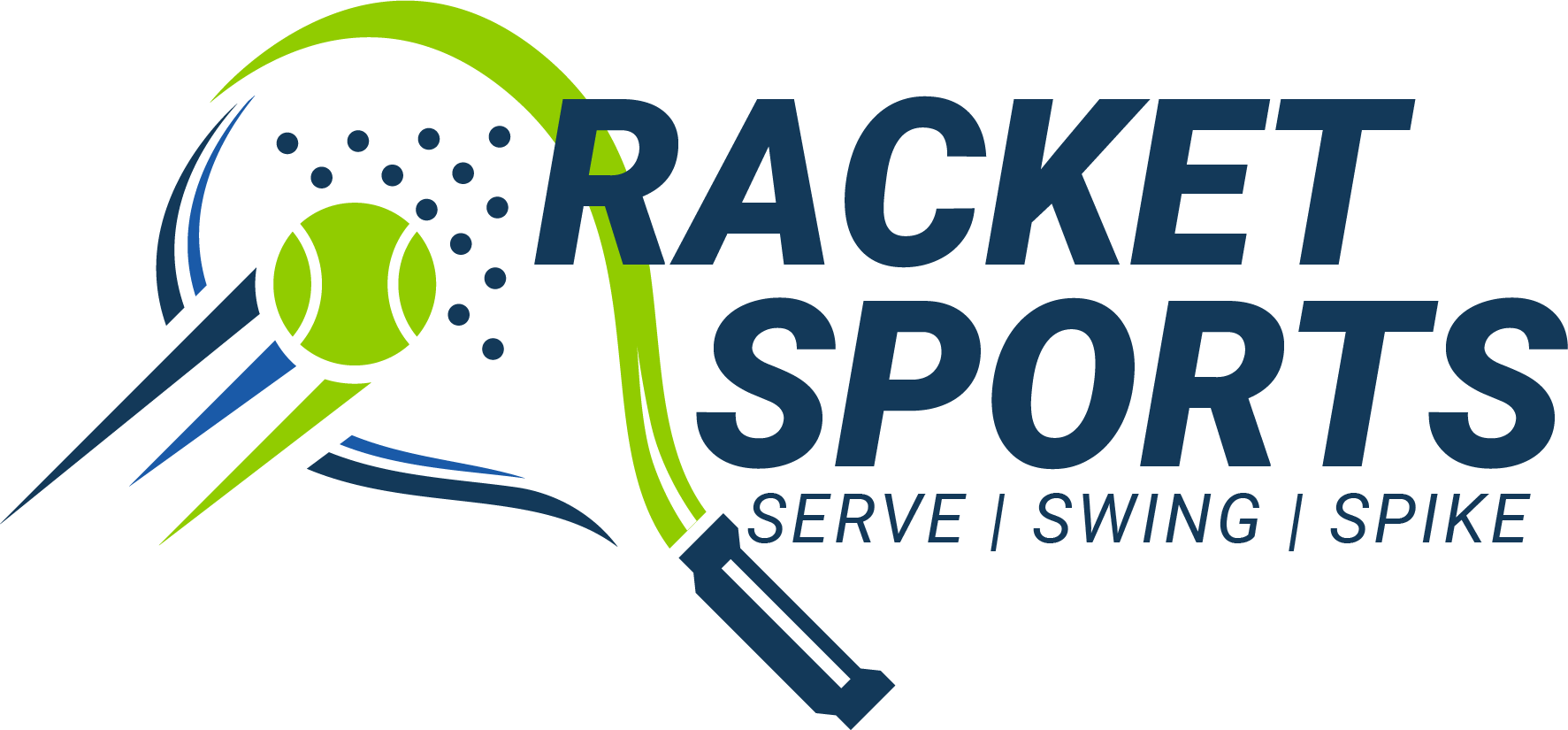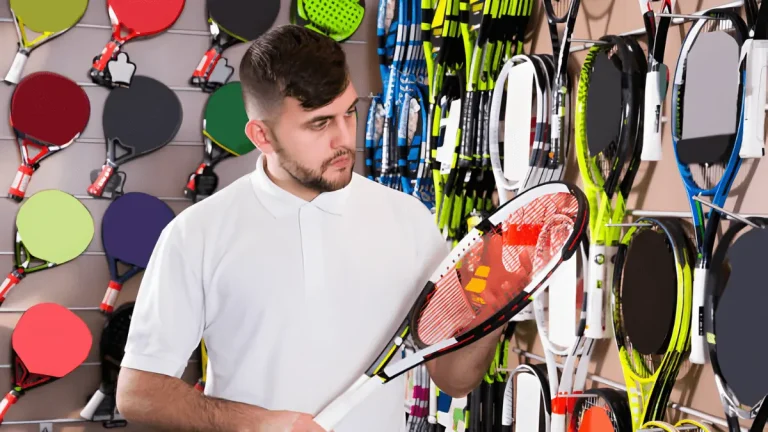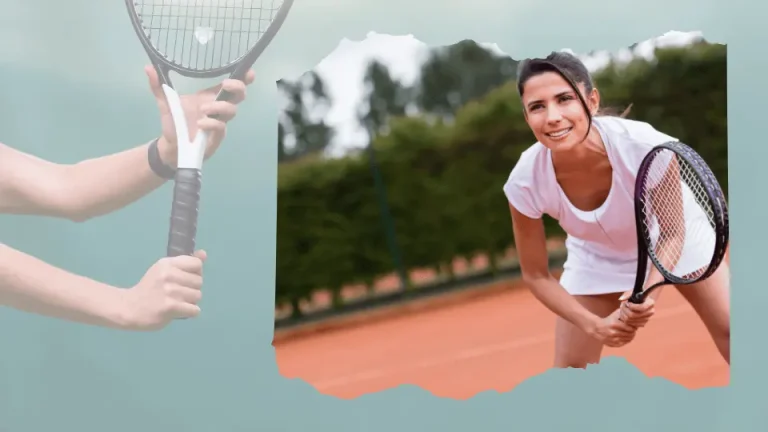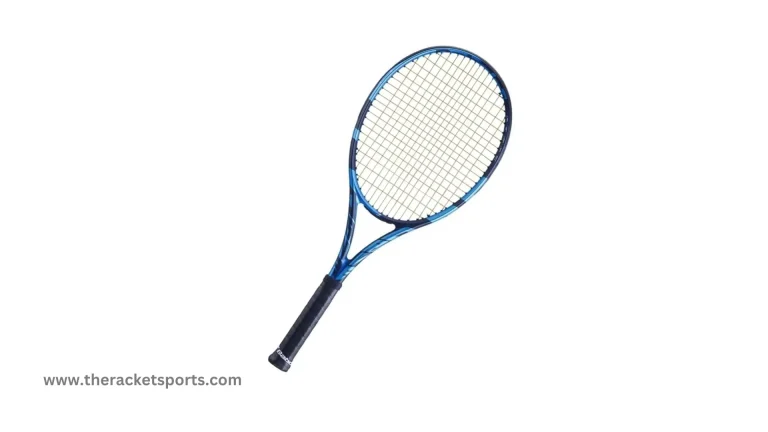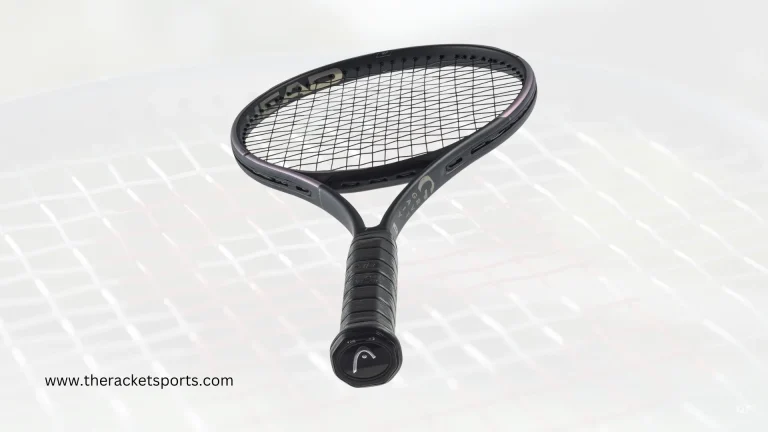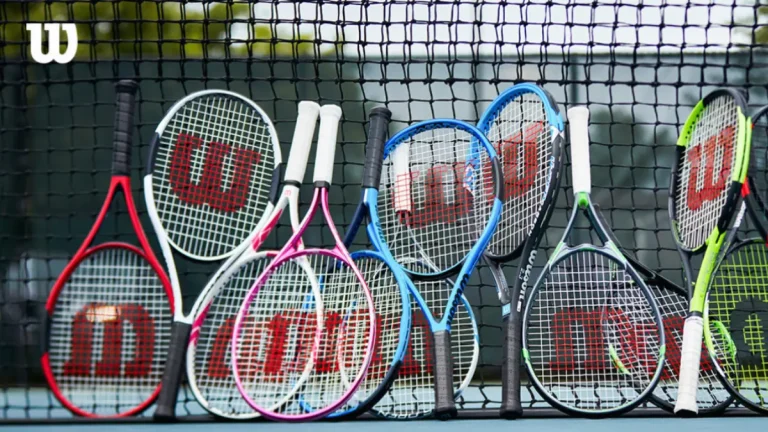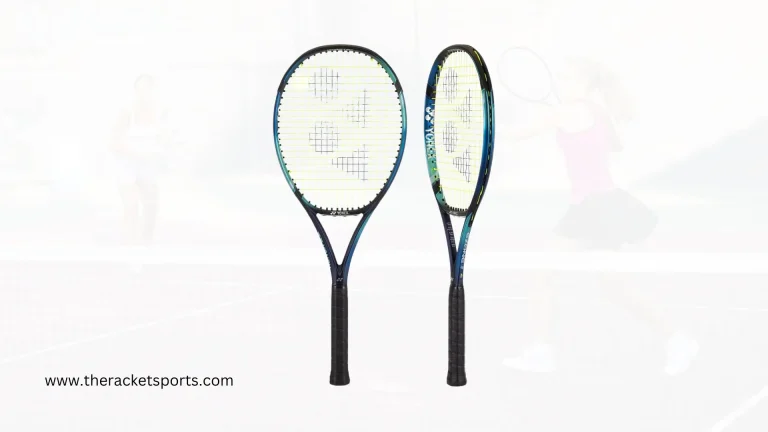Yonex EZONE 100 Review: Best Racquet for All Levels
At the start of 2025, the Yonex EZONE 100 returned with its eighth-generation update. We’ve used all previous generations of Yonex EZONE, and this one is easily the cleanest upgrade we’ve seen in the power racquet category. There are small changes as specs like 100 sq. inch head, 300g unstrung weight, and 16×19 string pattern stay intact.
Right as we held it, we could feel that it had a thicker beam at the frame’s tip as compared to previous ones. On paper, Yonex incorporated new silk-based dampening tech called 2G-Namd Flex Force, which makes it great for tennis players of all skill levels. But based on our tests, it’s easily the best Yonex EZONE model for intermediate players.
Yonex EZONE 100 2025 Review: Best Racquet for All Levels?
Players who liked the DR-era feel (dampened impact) will find this 2025 version familiar but better. See how Yonex EZONE 2025 performs on serves, groundstrokes, volleys, and returns, then decide for yourself. You’ll also get our honest take on its downsides, with Yonex Ezone 100 review from players of different levels.
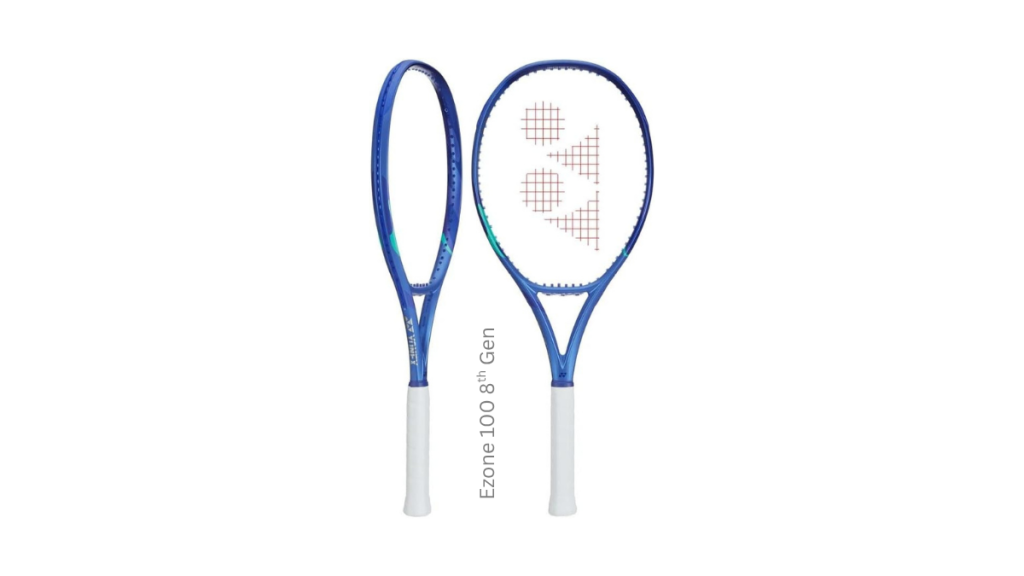
Yonex EZONE 100 Specifications (2025)
We recorded the measured specs of the Yonex EZONE 100 (2025) using a strung retail frame. It’s the same as advertised but for clarity here’s how they compare with the manufacturer’s official listings:
| Specification | Measured | Manufacturer Listed |
| Head Size | 100 sq. in. | 100 sq. in. |
| Length | 27 inches | 27 inches |
| Unstrung Weight | 300g / 10.6 oz | 11.2 oz (strung) |
| Balance Point | 320mm / 7 pts head-light | 4 pts head-light |
| Swingweight | 315 kg·cm² (strung) | 316 |
| String Pattern | 16×19 | 16×19 |
| Stiffness (RA) | 64 RA | 68 RA |
| Beam Width | Same | 23.8 mm / 24.5 mm / 19.5 mm |
What’s New in the 2025 Version?
The 8th-generation EZONE 100 gets several key structural updates that affect feel, spin, and overall playability, without straying far from its proven identity.
1. Tweaked Beam Thickness
Yonex thickened both the tip and throat sections of the frame, nearly 1mm in the hoop and 0.5mm in the throat. This improves torsional stability and increases energy return without changing the balance or swingweight. The center beam remains unchanged to keep the overall feel familiar.
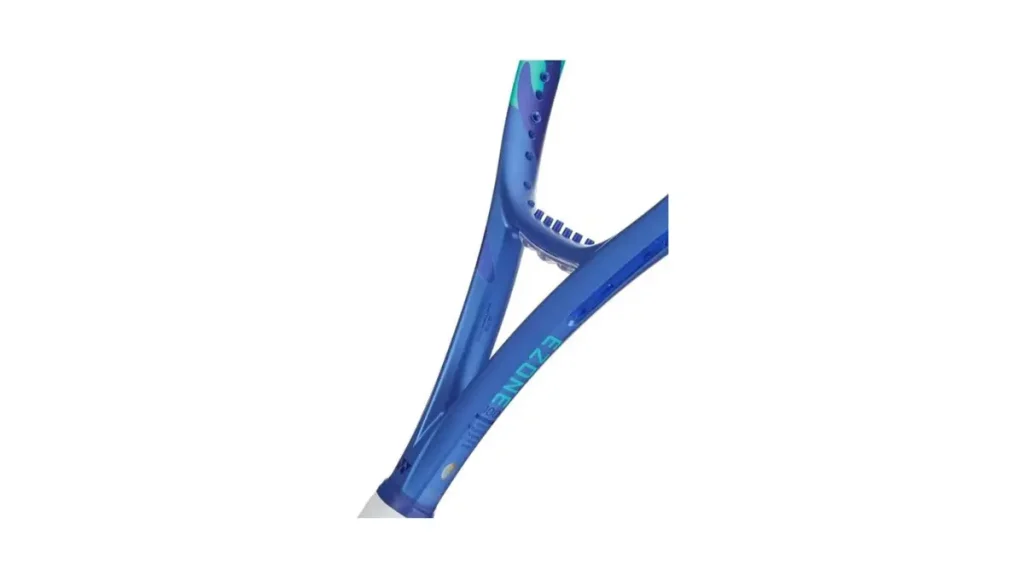
2. Softer, More Dampened Feel
Despite the slightly higher stiffness rating (RA 68 advertised), the frame feels more plush than the 2022 version. That’s thanks to Minolon, an advanced material derived from silk threads produced by bagworms. It softens the layup and reduces vibration, especially useful during long baseline rallies.
3. Improved All-Court Versatility
This version feels more connected on both offense and defense. The frame is powerful on forehands and serves, but it’s also balanced and maneuverable enough for controlled slices and delicate volleys. Learn more about this in the on-court performance section.
4. More Accessible Spin Potential
The 2025 update offers better spin access than the previous generation, especially on forehands. The launch angle is slightly lower, but the frame still grips the ball well for heavy topspin or flatter shots.
5. Broader Player Range
One of the standout traits of this update is how well it suits a wide range of playing levels. Intermediate players benefit from the comfort of a multifilament setup, while advanced players can go full polyester to dial in control and spin. It’s responsive without being overly demanding.
On-Court Performance: How the Yonex EZONE 100 (2025) Plays
Before covering the technology and build updates, here’s a full breakdown of how the Yonex EZONE 100 (2025) performs across all major shot types. This playtest review is based on live match settings and controlled drills to give you the most realistic and court-relevant insights.
Groundstrokes
From the baseline, the EZONE 100 feels extremely tuned for modern power play. Players get easy access to depth and pace without needing to swing out of their shoes. It has a rare balance between power, spin, and control.
- Power: The 300g weight and aerodynamic frame create natural acceleration, making deep drives easy.
- Spin: The 16×19 string pattern, combined with the isometric head, helps grab the ball for solid topspin, especially on higher-bouncing surfaces.
- Control:. Even at higher swing speeds, the ball stays on a reliable path. You can aim deep or angled shots without losing directional control.
- Comfort: Low stiffness rating (64 RA measured) softens impact and reduces vibration.
This racket rewards confident shot-making, which is light but effortless. Both forehands and backhands feel stable even on fast swings. Slices stay low and controlled, and the added flex in the layup gives it a forgiving feel on mishits. If your style leans toward attacking from the baseline with margin and spin, this frame works in your favor; no major adjustment period needed.
Volleys
At net, the EZONE 100 feels quick and comfortable, especially on clean contact. But it gives up some stability when you’re stretched or volleying heavy pace.
- Punch Volleys: Delivers solid depth and pop when you meet the ball in front.
- Touch Shots: The softer feel helps you control drop volleys and short angles.
- Fast Exchanges: It reacts quickly, but on off-center contact, there’s some twisting.
This racket works best for players who come forward to finish points, not for those who live at the net. It’s agile enough for quick setups and doubles poaching, but it’s not the most stable option under pressure. Still, the feedback on contact is clear, and confident volleyers will find it responsive.
It’s a fun frame for casual doubles and consistent enough for singles players who like to close. The racket’s best net trait is its feedback; you can feel the connection with the ball on every shot, which can help pace up rallies.
Serves
Serving with the EZONE 100 is one of the most effortless parts of using this frame. It rewards natural motion and wrist speed, helping generate spin and power without straining the arm.
- Flat Serves: Delivers easy pace, especially up the T. Serves jump off the string bed.
- Kick Serves: Generates good height and shape, useful for second serves or clay play.
- Slice Serves: Sharp angles and low skid off the bounce are easy to execute.
The racquet’s aerodynamic design and swingweight (315 strung) allow for a whippy serve motion, especially for players with a fluid action. You don’t need to muscle the serve; the frame adds pace naturally. Second serves, in particular, benefit from the combination of spin and depth.
If you like to vary your targets and mix speeds, this frame gives you that flexibility. It’s not a pure power frame, but it delivers enough pace for intermediate and advanced players to stay aggressive.
Returns
Returns are where the EZONE 100 punches above its weight. It feels planted at impact, especially during first-serve blocks or counter-punches, and gives players the chance to stay neutral or take early control.
- First Serve Returns: Blocks well with minimal recoil. Depth is easy to manage even on stretch shots.
- Second Serve Attacks: Easy to step in and drive the return. The racket doesn’t overreact to high RPMs.
- Directional Control: Targets are easy to hit from both forehand and backhand sides.
The EZONE 100 holds up well on returns. It absorbs pace cleanly and gives you just enough time to react. You can block deep, chip low, or step in and drive second serves without losing control. Overall, it’s one of the stronger return-focused frames in its weight class, helping players stay aggressive without overhitting.
Other Yonex Ezone Rackets to Consider
Yonex Ezone 100 8th Gen Technology Review
Now that we’ve seen how it plays on court, here’s a quick look at the key technologies built into the EZONE 100 (2025).
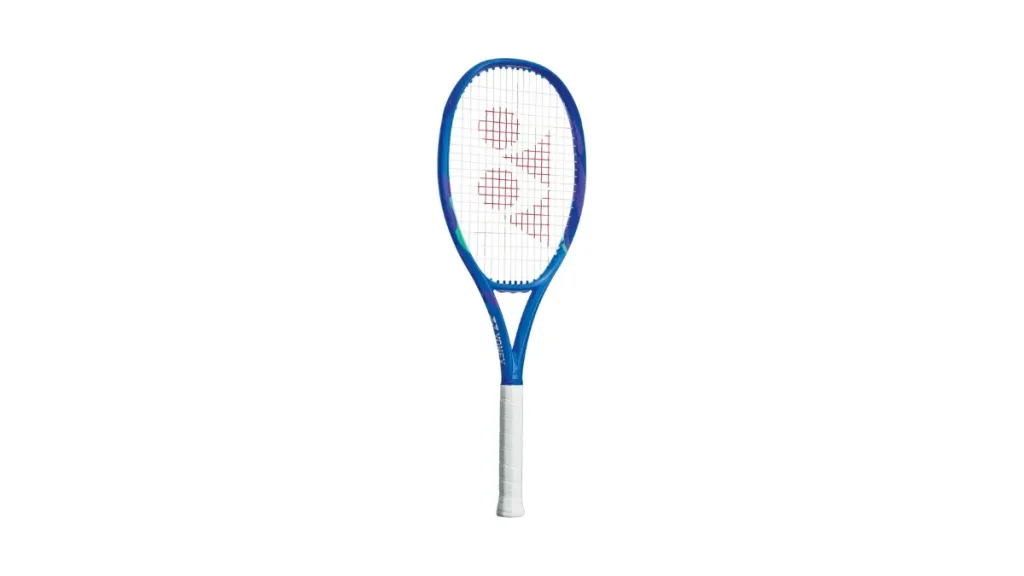
- Isometric Head Shape: Yonex’s signature square frame design increases the sweet spot by 7%, improving forgiveness on off-center hits.
- 2G‑Namd Speed plus Minolon: Combines traditional high-flex graphite with silk-derived fibers for better energy return.
- Oval Pressed Shaft (OPS): Introduces extra flex in the shaft for longer ball dwell time, which helps with spin and directional control.
- VDM (Vibration Dampening Mesh): Built into the handle, this tech filters shock and reduces harsh feedback on impact.
- Aero-Shape + Thicker Beam Mold: Updated frame shape adds power and torsional stability while keeping the swing smooth.
Final Rating Based on Gameplay and Skill Levels
Below is how four experienced players rated the EZONE 100 (2025) based on their playing style and match experience.
| Player | Level & Style | Overall | Best Traits | Weak Points |
| Omar | 4.0 Aggressive Baseliner | 9.0 | Power, spin, plush feel | Slight torsional instability |
| Taylor | Open-level Aggressive Baseliner | 9.0 | Controllable power, spin, feel | None |
| Rafiq | Counterpuncher, 2HBH | 9.2 | Power + control combo | Slightly inconsistent on approaches |
| Leo | All-Court, 1HBH | 9.0 | Spin, forgiveness, net stability | Nothing major |
Who Should Buy the EZONE 100?
This racket works best for players who are ready to play with intent, not those just learning the game.
Best Suited For:
- Intermediate to Advanced Players: NTRP 3.5–5.0
- Aggressive Baseliner: Looking for controllable power
- All-Court Players: Those who want a balance of speed, comfort, and spin
- Junior Players: Transitioning into full-size performance frames
Not Ideal For:
- Beginners: The Frame might feel too responsive and powerful. If you’re just starting out and looking for the perfect gear, check out our guide to the Best Beginner’s Tennis Racket to make the right choice for your game.
- Big Hitters: Those who already generate excessive pace
- Max Comfort Seekers: Players needing ultra-soft impact feel
The EZONE 100 (2025) doesn’t try to be everything; it stays in its lane and excels. If you’re looking for a stable, spin-friendly frame with power and comfort dialed in, this one is worth a serious look.
Yonex Backpack Recommendation
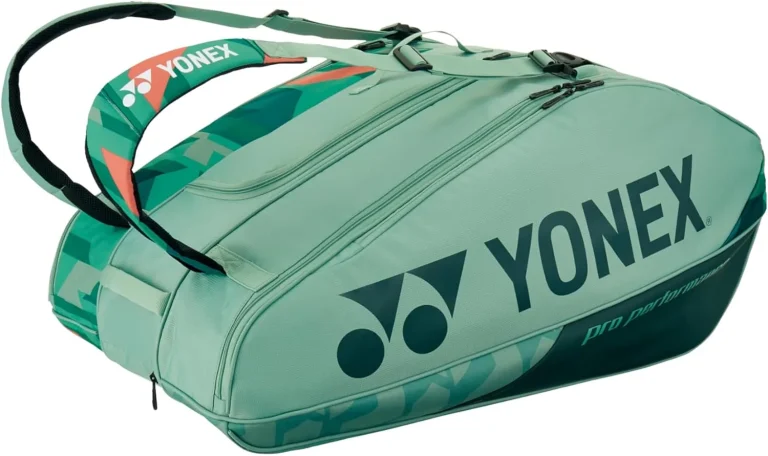
Faqs
Is the Yonex Ezone good for beginners?
It’s not designed for complete beginners, but if you can swing accurately, then the racket can help you improve quickly, as it has a huge sweet spot.
Do any pros use the Yonex Ezone?
Yes, many top players use it. Naomi Osaka plays with the EZONE 98, and it’s also used by pros like Casper Ruud, Jessica Pegula, Ben Shelton, and Tokito Oda on the ATP and WTA tours.
Which is better: Yonex Ezone 98 or 100?
The Ezone 98 suits advanced players who want more control and precision. The Ezone 100 offers extra power and forgiveness, making it a better pick for intermediate and all-around players.
